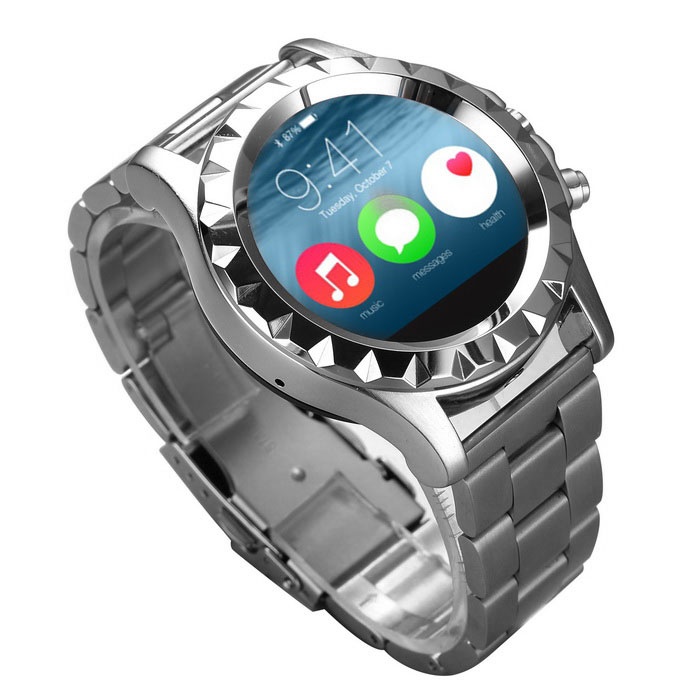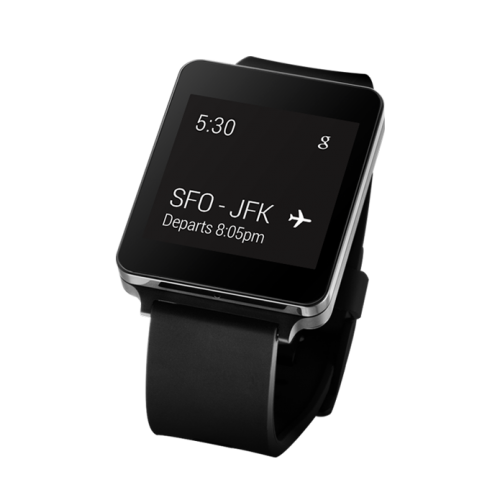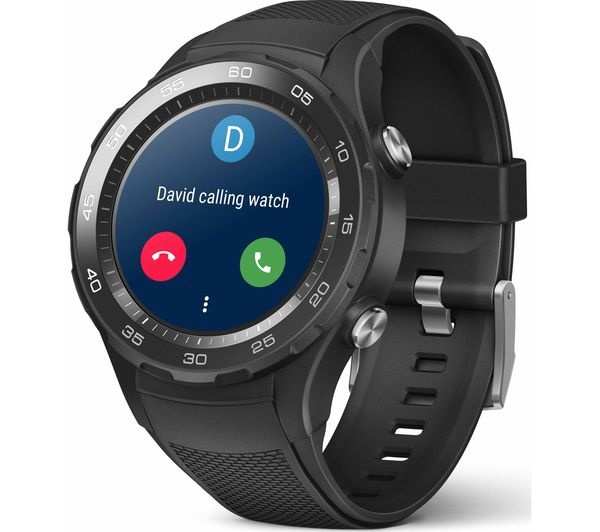As a tech geek, I have been using wearable devices since 2013. Here’s what I’ve found and how I have approached smart devices since then – including my thoughts on pricing, usability, and value.
Xiaomi Bracelet (2013-2014)
My first wearable was a Xiaomi smart bracelet with a fitness tracker. Its battery life was splendid, anywhere between 7 and 10 days. The smart device had a single button switching between notifications and daily steps. On top of that, it was rated as IP67 waterproof.
I kept using it for a year and a half. Notifications didn’t appear properly from all apps. Longer messages had some natural limitations.
S2 Smart Watch (2015-2016)

My next smart toy was a No.1 S2 Smart Watch. The nameless Chinese brands had already flooded the market with numerous, low-cost alternatives. S2 was also appealing, visually speaking, and equipped with a number of handy features (heart rate monitor, pedometer, audio speakers).
I was extremely happy with this one, despite being a random device from an unknown brand. Sadly, a year in, its custom connectivity app grew less and less reliable.
- Bluetooth is known to cause problems at times.
- Recent Android releases became smarter in terms of memory management. Suspending apps on-the-fly and setting different priorities was hard to track at times.
- S2 ran a custom firmware which happened to be compatible with Android – but nowhere near as much as Wear OS.
Betting on unknown brands is a gamble. I had owned a number of non-flagship devices over the years – Sagem and Oppo phones, Chinese notebooks, some Arabic tablet I bought from KSA. Regressions, limitations, and side effects are fairly common. Even though I’m currently running another Oppo phone (Find X2 Pro) which is absolutely awesome.
LG G Watch (2017-2018)

In 2017, I bought a second-hand LG G Watch. Buying new overpriced electronic equipment that is about to fail within 6–18 months seemed like a poor investment – compared to testing multiple gadgets in a short time span, hence browsing the local market upfront.
I landed a great deal buying it for $65 or so – about 40% of its current market price and 70% off its initial price – and 8–10 times cheaper than a new Apple Watch or its Samsung counterpart at the time.
LG G Watch was compatible with Google Wear. Bluetooth support was drastically improved. Custom watch faces and other visual goodies were available.
Welcome, Google Assistant support! Handling replies on Slack straight from the watch, custom emojis (for quick replies, including drawings), voice-controlled answers, Google Maps navigation while driving – some perks that were thrilling.
However, it lacked stereo speakers. I used my S2 for phone calls while driving, picking up a call without looking for my smartphone at all. Moreover, playing other audio tracks from video or a music player wasn’t transferable to the watch, either.
It sure felt more native than the S2 – given the full Wear support. But it’s dated, doesn’t support the latest Wear OS, lacks some extra bandwidth, and has no buttons whatsoever. Shutting it down is an interesting exercise when you can’t turn it on without connecting a charger.
Huawei Watch (2018)

My latest upgrade was the Huawei Watch 2 4G. The market price was $400 – $450, a second-hand deal again for $200.
I wanted to get the best of both worlds (my S2 and G Watch combined) with a new update. Sadly, the Huawei was my #2 choice. I wanted to grab an LG Watch Sport instead but couldn’t find it locally. Reviews were slightly better, Huawei was featured as a “sports model” even more than LG’s (despite its name), and LG’s navigation presents a rotating “crown” for browsing throughout menus.
So far, I have mixed feelings. Battery life is generally disappointing – a colleague is using a Samsung watch that lasts longer.
Calibrating notifications seems a bit weird. Huawei has its own app as well, working atop the Wear OS one. This may require some fine-tuning, but some pop-ups stay stuck on the screen (intended behavior) while others don’t. The LG watch had a neat bottom bar suggesting that notifications were available, and that was really handy.
Managing replies felt easier with the LG. Swipe right – mark as read. Swipe left – reply or archive. Huawei’s depends on a slow click and another action, less intuitive overall.
Feels like the buttons can be mounted to combinations – doesn’t seem to work that well. The screen is also smaller (same height but width is trimmed on top and bottom as LG has a rectangular screen).
On the bright side, this is the 4G model. I can plug a SIM card in my watch and forgo the phone while going outside for an hour or so. My carrier doesn’t support multiple SIMs with the same number which is a shame.
Edit 1: some limitations came from Android Wear itself so these apply to most models. Some improvements have been made although certain reports have been marked as a UX “improvement” despite numerous complaints on forums.
Samsung Galaxy Watch (2019-2020)

I got to admit, this was a really, really great watch.
Probably my favorite, despite certain aspects I didn’t like.
I spent nearly 2 full years with Samsung’s first Galaxy Watch, and contemplated upgrading to GW3 since they skipped 2 in its original form. The second version was a sports-alike version, lightweight, missing a lot of the features I used in the original.
Things I loved with Galaxy Watch:
- Great battery life compared to other watches in this segment – about 3 days with my use!
- The rotating crown is so useful – I can’t even stress that enough
- Decent app support for some popular apps like Spotify or Strava
- Some integrated features and reminders like water drinking reminders or the like
- The ability to respond to texts if needed
- Audio was going through – and mic was included
What made me switch after GW?
- Two years in, the crown and one of the buttons weren’t behaving extremely well. The change was inevitable, the question was whether I was going to buy the same model again (although dated in terms of hardware power) or switch to something else.
- I was explicitly waiting for Galaxy Watch 3, waiting to upgrade, but it was a total disappointment. Practically no new usable features, no app opportunities that would make sense, yet the battery life was *worse* than the OG.
- Galaxy’s battery life was down to 2 days, and even though Wear OS devices barely make it through a single day, it wasn’t working out real well for me.
After long and careful consideration, I actually realized the app ecosystem isn’t such a winning argument at a time. I’ll elaborate in the next two sections.
Fossil Gen 5 (2020)
Over the course of time, I bought my wife a Huawei GT2 Pro and Samsung Watch Active for running. I had a rough idea of what other devices were bringing to the table – sports features and fairly good battery life opportunities, although at the cost of features I would use (like reminders or calls or whatever be it).
So in Jan 2020 I bought a Fossil Gen 5 watch which allegedly had an “ok” battery life for a Wear OS watch (lasts through the day), and enough RAM to not lag during every opportunity it gets.
I gave it a run for a couple of weeks before it joined the Huawei/Samsung collection. All in all, the smoothness of the UX wasn’t all that great, the battery life was still 2.5x worse than the Samsung, and more importantly…
I realized the app ecosystem in Wear OS is not much, really.
You can run Messenger, Whatsapp, Hangouts, and Google Maps. There. You can open a chat via one of these popular apps (maybe Telegram too) and text other people.
Literally everything else was supported even by Tizen, which is notorious for the lack of app support.
So in terms of software, Wear OS was still so, so behind that it wasn’t worth switching over to. And Tizen didn’t innovate for the past 2 years to convince me to grab the Galaxy Watch 3 (at least fix the damn battery life folks).
Garmin Forerunner 735xt (2020)

OK, it was about time to look around the other ecosystems. The Fitbits, the Garmins, the Suuntos, and so forth.
I was making a serious effort to stay in shape from the end of 2019 onward, so I dabbled with cycling and bodyweight training, and hired a coach in August. After browsing for a while, and knowing that battery life is important, I decided to grab an older variation of Garmin’s Forerunner 735xt and give it a run for a few weeks to figure out if the ecosystem is mature enough.
735xt was a fun watch actually. It was smart enough to allow custom notification options and battery life lasted like 6 days or so (whoa), but the lack of a touch screen took me off guard even after I purchased it. After looking around, I realized that the most premium Garmin watches (in the thousands of dollars) do NOT have touchscreens available, and that’s really good to know if you actually plan to use your watch as a smart watch.
Besides that, notifications worked, recording workouts worked very well of course, and I didn’t quite need anything else (or so it felt).
So it took about 2-3 weeks to test (lack of screen use was tough) when I grabbed the Vivoactive.
Garmin Vivoactive 4 (2020 – 2021)

This is the watch I’m currently using – even though Garmin aren’t well-known for their high tech devices, you know.
Garmin have only 2 series with touch screens – Vivoactive and Venu. Venu has a shiny AMOLED display while the Vivoactive rocks something that reviewers define as “sunlight-visible, transflective memory-in-pixel (MIP) display“.
My take – it’s not shiny but it’s more than beautiful enough unless you expect to watch videos or browse photos on your phone (this review is definitely not for you then). Venu’s battery is worse precisely because of the shiny display so this was actually a turnoff for me in this case.
Vivoactive 4 was 2 or so years newer than the 735xt so it behaved well, proper notificaton control, more options for activity setting in the Garmin Connect app, and some other adjustments one can perform.
I generally like the watch – and still use it, so you can take I’m satisfied with for the most part. On the sports front, I also grabbed a Garmin chest strap which connects automatically with the watch before workout, and measures proper heart rate metrics (your watch simply doesn’t, period). Battery life is at least 3 days when working out daily, and 4 if I charge on a Friday and skip the weekend.
Great features like “body battery” which tells me how well I slept or how heavy a workout was, great watch dashboards, ALWAYS ON DISPLAY because that’s how cool this Vivoactive display is, etc.
What I don’t necessarily like here?
- Battery life is still advertised longer – 5-7 days instead of 3-4. Again, still the best I could find, but if it goes down to 2 days, I may grab a Samsung watch again.
- No microphone, no assistant, no picking up calls. The calls thing isn’t really that bad, although I hate walking in the winter or washing dishes and having to seek my phone just to respond with “I’m coming”.
- Lack of assistant isn’t all that bad either indeed, but things like “change my song” while working out just don’t work.
- Some basic app settings – now, Garmin’s app ecosystem is even work than Tizen’s, that should be clear. But certain basic activities like “set up an hourly reminder to drink water” are impossible from an OS perspective, unless they’re already implemented by Garmin’s team in the OS core.
- Some software settings are hidden for no reason. My 735xt which was an old and cheaper watch had “recovery time” suggestions based on the workout, and vivoactive doesn’t. Nothing in the world can convince me that there’s a missing software piece or a hardware chip that prevents this basic feature from being supported.
Besides that, I’ll still rock the watch for a while now. If I could rely on 5 full days while training, I may forget about another watch for at least a year. Nowadays I’m just worried that if I forget to charge and wake up at 18% or so, I may be draining during a heavy workout which would fail to record proprely. Still, charging time is good enough to charge 15min to last 8+ hours.
Summary
I’m still a fan of smartwatches.
However, battery life can be really disappointing. I realize it’s a small yet powerful device, but it’s still a freaking watch. It barely lasts a day – even my phone can beat that at times.
The smart bracelet’s uptime of 10 days was freaking awesome. I’ll recommend that (or a fitbit, Garmin, etc.) to people who care about sports tracking or generic notifications – SMS, call, pop-up with less interactivity.
The recent Android watches aren’t extremely usable yet. I spent a couple of days looking for handy apps and tricks. Wear OS support is still limited, I can’t even open Gmail and scroll through past emails. Assistant is getting smarter, but slowly.
First-time watch users, I’d suggest a cheaper option – second-hand or an older generation watch for testing purposes. No need to pay for a feature-limited watch which dies daily and costs as much as a phone.
Top “features” I use on the watch are:
- Taking phone calls
- Quickly responding to messages while I’m outside or in a meeting
- Monitor notifications while driving or chilling in the evening
- Basic step tracking and fitness goals
- Weather forecast
- Recording audio messages on the go (notes)
- Keeping track of my shopping list with Google Keep notes and checklists
- Google Calendar events
- Finding my phone via “Find my phone” (seriously, that’s gold)
What about you? Can you share your smartwatch experience?




